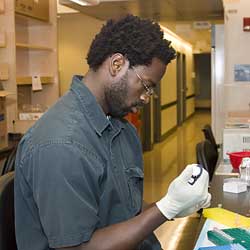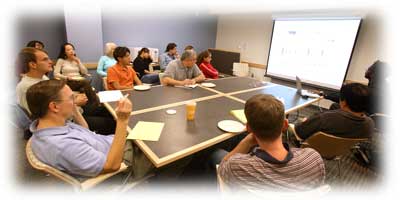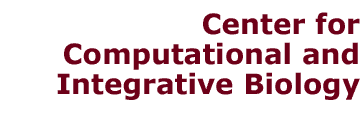Szostak Lab
 The key concepts of genetics are phenotype and genotype: genotype is generally embodied in a nucleic acid sequence, and phenotype represents some observable property of an organism. Moving these ideas from the organismal to the molecular level leads naturally to the idea of creating and manipulating genetic variation in molecules, entirely in vitro. The discovery of catalytic RNAs in the early 1980s demonstrated that RNA could manifest a range of interesting phenotypes. Simultaneously, the invention of the polymerase chain reaction made it easy to replicate almost any nucleic acid sequence in vitro. Together these advances inspired the development of practical ways of using in vitro selection and directed evolution to search sequence space, the ensemble of all possible sequences, for new functional RNA, DNA, and protein sequences. The key concepts of genetics are phenotype and genotype: genotype is generally embodied in a nucleic acid sequence, and phenotype represents some observable property of an organism. Moving these ideas from the organismal to the molecular level leads naturally to the idea of creating and manipulating genetic variation in molecules, entirely in vitro. The discovery of catalytic RNAs in the early 1980s demonstrated that RNA could manifest a range of interesting phenotypes. Simultaneously, the invention of the polymerase chain reaction made it easy to replicate almost any nucleic acid sequence in vitro. Together these advances inspired the development of practical ways of using in vitro selection and directed evolution to search sequence space, the ensemble of all possible sequences, for new functional RNA, DNA, and protein sequences.
The simplest interesting phenotypes of RNAs and DNAs are binding properties. In vitro selection for sequences that fold up into specific three-dimensional structures that contain highly specific binding sites has been used to isolate many nucleic acids, called aptamers, that bind a wide range of small biomolecules, including nucleotides, amino acids, antibiotics, and cofactors. We have found that these nucleic acid molecules can be selected successfully for catalysis as well.
Application of the principles of in vitro selection and directed evolution to peptides and proteins is a powerful tool for investigating protein function and structure and for obtaining insight into the pathways by which enzymes evolve in nature. Our approach has been to generate stable, covalent RNA-protein fusions in a completely in vitro system. We do this by covalently linking puromycin, an antibiotic that mimics an aminoacylated tRNA, to the 3' end of a synthetic mRNA through a DNA linker. A ribosome begins translation of such a template as usual, generating a peptide as it transits the open reading frame. When the ribosome reaches the end of the open reading frame and hits the DNA linker it stalls, allowing the nearby puromycin to enter the A site of the ribosome and accept the nascent peptide chain. The resulting RNA-peptide fusions can be formed efficiently from mRNAs encoding small peptides or large proteins.
We have prepared libraries of fusions encoding random peptides and are preparing to begin evolving new binding domains and enzymes. An exciting future application will be the ability to conduct side-by-side comparisons of RNA and protein evolution. (This work was supported in part by grants from the National Institutes of Health.)
Click here to see a web presentation on the origins of life created by Janet Iwasa of the Szostak Lab.
Click here to see the NSF Chemical Bonding Center web site.
|



 The key concepts of genetics are phenotype and genotype: genotype is generally embodied in a nucleic acid sequence, and phenotype represents some observable property of an organism. Moving these ideas from the organismal to the molecular level leads naturally to the idea of creating and manipulating genetic variation in molecules, entirely
The key concepts of genetics are phenotype and genotype: genotype is generally embodied in a nucleic acid sequence, and phenotype represents some observable property of an organism. Moving these ideas from the organismal to the molecular level leads naturally to the idea of creating and manipulating genetic variation in molecules, entirely